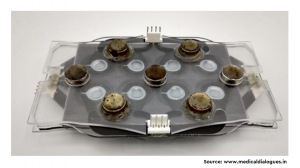The antimicrobial agents are used throughout the world across a diverse array of livestock, to protect their health and production. The rise in demand for animal protein is facilitated by intensive farming. Intensive farming involves high inputs such as capital, fertilizers, labor in relation to cultivating area along with medications to livestock. However, the routine use and misuse of antimicrobials accelerate the development of resistance, a general term that encompasses poor efficacy of antimicrobials to treat diseases. Antimicrobial resistance (AMR) in food-producing animals can affect humans who work closely with animals and affects the health of individuals who consume food products contaminated with drug-resistant microorganisms. Evidence estimated that 73% of all antimicrobials sold globally are used in the animal sector which is raised for food.
Recognizing the need of monitoring the global antimicrobial usage trend, the current study collected the antimicrobial sales data for chicken, cattle, and pig systems across 41 countries in 2017 and projected global antimicrobial consumption from 2017-2030. The chicken, cattle, and pigs account for major animal foods (93.75%), the antimicrobial use in them projected an increase by 11.5 percent. Asia consumed the largest amounts of antimicrobials, in both 2017 and 2030 with an expected increase of 10.3% over this time period. The study also builds upon the reporting efforts from individual countries and stresses tracking antimicrobial stewardship efforts in humans and animals.
To learn more kindly visit the website of Antibiotic journal( LINK )







